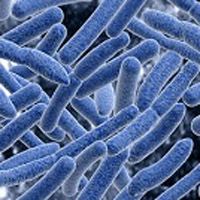Extra Genes Differentiate Harmful, Beneficial Bacteria
Extra genes can determine whether bacteria will be beneficial or harmful, according to researchers in Portugal.

Extra genes can determine whether bacteria will be beneficial or harmful, according to researchers in Portugal.
Published in PLOS Biology, the team analyzed the relationship between Drosophila melanogaster, a fruit fly, and the bacterium Wolbachia, which is sometimes responsible for fighting off viruses. Since their previous investigation found large amounts of the bacteria become dangerous—and possibly deadly—for its host, the team looked into the genetic mechanism that controls Wolbachia population.
An overamplification of Octomom, a region of eight genes, was identified by researchers as they cause the bacteria to overproduce. The authors reported this mutation is problematic, as they discovered higher levels of Wolbachia was linked to the flies’ premature death.
“Using Drosophila lines selected for carrying Wolbachia with different Octomom copy numbers, we demonstrate that the number of Octomom copies determines Wolbachia titers and the strength of the lethal phenotype,” the team wrote.
Furthermore, the investigators noted a higher density of the bacteria caused them to mutate at a faster rate. However, when they modified Octomom to express genes normally, reproduction slowed down—further indicating a genetic and phenotypic association.
“We discovered a region of the Wolbachia genome responsible for regulation of its densities in the flies,” Luis Teixera, the study’s leader, said in a news release. “This is the first study linking genes and their functions in this bacteria and it provides a unique point of entry for the understanding of the widespread insect-Wolbachia symbiosis.”
The scholars concluded their findings are especially relevant because infected mosquitoes are being released into the wild to combat dengue fever, and understanding this dynamic is important to gauging potential risk factors.
“Our results show that transition from a mutualist to a pathogen may occur because of a single genomic change in the endosymbiont. This implies that there must be constant selection on endosymbionts to control their densities,” the researchers penned.